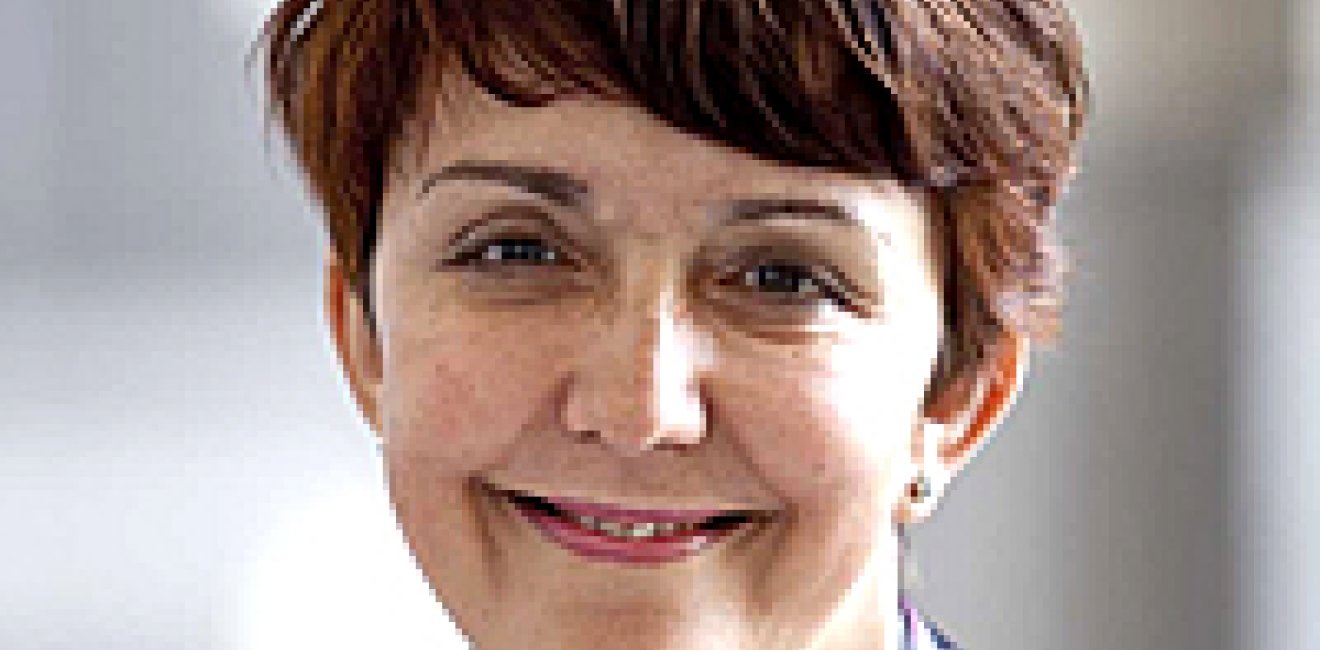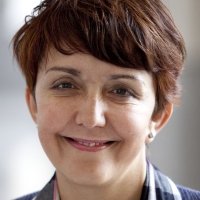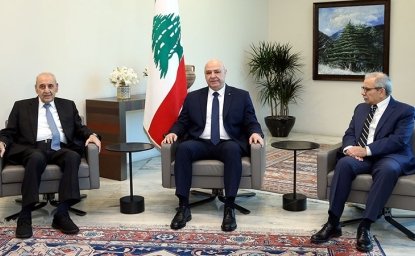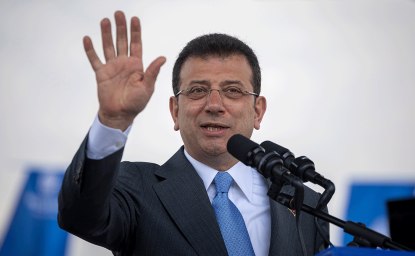When in 1756 French enlightener Honoré Gabriel Mirabeau introduced the notion of «civilization» into academic vocabulary, he meant the society based on the principles of intelligence and justice. Later German philosopher Oswald Spengler pessimistically viewed civilization as “numbing” of culture’s organic life, its collapse, as well as conversion of labor into mechanical work devoid of creativity. Contemporary American scholar Samuel Huntington elaborated a theory on the collision of different cultures in present epoch, as well as defined civilization as cultural community of the highest rank and cultural identity of people of the greatest level.
Civilization and cultural processes, especially in their crisis stages, are always in the focus of scholars. Studies of civilization fractures and new cultural paradigms require particular responsibility from researchers performing analysis in the thick of events. Today, in 2014, this is done by Ukrainian scholars who must collect the diverse empiric facts on civilization choice of Ukraine and rationally generalize them, while emotionally experiencing every moment of the crucial social and cultural upsurge of their country.
Art has a special place in Ukrainian revolutionary events of 2013-2014. Artistic factor is generally constitutive for Ukraine, where passionate political activists have always been recruited from artists. After the Cossack state decayed, the Ukrainian people have created the state in their art. This is inherent and essential for Ukraine that has always been and still is the bearer of emotive principle and has not incurred the limitation of classical European rationalism and pragmatism. Thus, Ukrainian leadership and guiding forces are often connected with art. Not accidentally, Ivan Mazepa was a composer, while Ivan Franko was a politician.
In 2004, the Orange Revolution revealed the moving force of art in Ukraine in a new manner. A stage, a microphone, a tent and a TV-set became the symbols of the revolution. Television transmitted permanent huge happening that the world had never seen before and made the world its immediate participant. The main components of the happening were:
- Continual multi-day concert of famous and unknown performers at Maidan Nezalezhnosti in Kyiv;
- Art exhibitions at Khreshchatyk: “TAK” exhibition in a tent, drawing slogans near Kyiv city council, 60-meter letter to Vladimir Putin, huge Angel over Maidan, etc.;
- “Veseli yaytsia” (Merry Eggs) serial and its instant distribution in the Internet and demonstration on big screens at Maidan;
- Outburst of new folklore that was born at Maidan and disseminated through the Internet;
- Weaving orange carpets by folk masters at Kyiv Conservatorium;
- Artistic orange decoration of Maidan.
The blue-and-white maidan that opposed orange also used art: mainly pop-signers that performed Russian or Soviet works, while orange stages were dominated by rock-singers with Ukrainian songs. Certainly, in both spaces there was an eclectic mix of genres characteristic of our post-modern epoch, but artistic dominants of maidans organically illustrated major mythologems of different colors. The orange rock created a new world with new myths and heroes, with new rules of play: clean hands and bandits in prisons. The nostalgic soviet music of blue-and-white returned to old idealized mythologems of socialist times, when there were also sometimes clean hands and some bandits were in prisons. The new and the old in art came into confrontation strengthened by a range of social, economic and primarily psychological factors. Transmitted by television, this confrontation turned into politics.
This winter’s revolutionary events in Kyiv spread throughout Ukraine and sharpened the processes launched in 2004. Longer period of protests, their mature civil and political motivation, as well as tragic self-sacrifice stimulated fantastic artistically creative expression of professional artists and ordinary Maidan participants. In fact, Maidan itself turned into an impressive artifact. Like in 2004, the stage was the center, while the main symbol was represented by slogan-decorated huge metal construction of New Year tree, mounting of which became an official reason for dispersal of students in late November, 2013. It was the main installation of Maidan, though there were many others. In particular, such were the barricades or the “geographic” installation – the creative construction of wooden plates with names of different cities, villages and Kyiv city districts symbolizing unity of Ukraine on the corner of Institutska and Khreshchatyk. Besides art-installations, the following creative artistic manifestations are worth mentioning:
Poster art: from self-made satirical posters to Internet community “Strike Poster”, “Museum of Poster of Ukraine” that quickly reacted to all the developments. Out-of-door advertisements were also brought into play, including industrially printed posters like “I breathe freely” or “Angry Ukrainians” series, and simple writings on empty advertisement boards: “Grushevskyi’s cocktail”, “It is prohibited to prohibit”, etc.
Photography: its instant dissemination through the Internet and exhibitions on the barricades of Maidan and at Grushevskogo near Parliamentary Library.
Sculpture: wooden sculptures by Yaroslav, a master from Kolomyia, marble sculpture “New Ukraine” by French street sculptor Roti that depicts a woman emerging from the depth. These works are located at Instytutska.
Painting: in its different forms and genres – from street art to portrait and decorative painting. Various murals and graffiti (that are in principle consonant with revolution) appeared at once. In February 2014, to support the will and the spirit of those on the front line social painter Sociopath painted the trilogy “Icons of the Revolution” with the images of Taras Shevchenko, Lesya Ukrayinka and Ivan Franko near the barricades at Grushevskogo. From the very beginning, painters worked at Maidan depicting the first peaceful days and further hot battles. On request of Afghan veterans, their tents were artistically painted. When the first heroes emerged, there appeared their portraits – Cossack Mykhailo Gavruliuk, the Heavenly Hundred. Oleg Smal, the painter, and Yuriy Zhuravl, the graphic artist and the leader of Rivne group OT VINTA, held exhibitions of their works at Grushevskogo Street.
Art centers: Artistic barbican appeared at Khreshchatyk. Its organizers believed that fortification is the best form for the civil post of creative intelligentsia for holding artistic actions – exhibitions, literary readings, etc. The Artistic Hundred settled in the Ukrainian House. Young artists creatively decorated shields and helmets of fighters.
Music: like in 2004, performances of singers and musicians on the stage played a great uniting and motivating role. A special event was made by performance of Sviatoslav Vakarchuk with the old staff of Okean Elzy group on December 15. Signing of the Anthem of Ukraine in the New Year’s Eve by nearly 500 thousand people with lighted and raised torches established a new world record. Besides performances on the stage, musical works related to Maidan immediately spread through the Internet. The world-famous Kyiv composer Valentyn Sylvestrov created the diptych “… I vam slava, syni gory” and “So sviatymy upokoi” dedicated to the memory of fallen Sergiy Nigoyan, as well as two a cappella choral songs “Hymn” and “Christmas psalm” dedicated to Maidan.
Cinema: from the first revolutionary days cinema began to record the Euromaidan events. There was created a civil initiative involving filmmakers called BABYLON’13. They shot mini-documentaries: all histories had no reference to authors; their main goal was to motivate the viewer for hard work for the sake of the future rather than create the chronicles. Another cinema association Bimba Production worked on the project “DNA UA” about the people with a gene of a true Ukrainian that direct their potential for building new Ukraine. Finally, cinema sketches of winter 2013-2014 will be composed into full-length documentaries about the grand and tragic period that went down in the world history as Euromaidan. In March 2014, during the opening of the 11th International Festival of Documentaries on Human Rights there was presented the chronicle of the Ukrainian protest “Euromaidan. Rough Cut”, where the episodes of future films about Euromaidan shape into kaleidoscope of the revolution that does not require comments, where Kyiv stands out not only as shooting area, but as the heart of the revolution.
Piano, performance: Within Euromaidan saturated with creativity, a special striking page belongs to numerous performances with yellow-and-blue piano that first appeared near the Presidential Administration when a musician played for the police. The piano further traveled to Kyiv City Council and finally got to the barricades at Grushevskogo. There even appeared a community of extreme piano players who, to support the spirit of the revolution, played piano – the “instrument of freedom” wearing balaclavas. Lviv, Donetsk, Uzhgorod, Kirovograd and other regional centers followed Kyiv and joined the “Instrument of Freedom” action with yellow-and-blue pianos appearing in the streets and activists playing them simultaneously. Piano became a symbol of the revolution, of the peaceful protest, as well as indication of culture and consciousness of the revolutionaries.
Our quick analysis certifies that Euromaidan of 2013-2014, similarly to Orange Maidan of 2004, was a creative phenomenon. The first collection of poetry about Maidan was published in spring 2014, numerous galleries held exhibitions devoted to it, and a book with the best photographs is currently being prepared. Reflection in prose and feature cinema requires some time, but such works will definitely appear soon.
At the same time, it is interesting to know whether creative component was present at Anti-Maidan, where, like in 2004, soviet songs and thieves’ chanson dominated. In other aspects, Anti-Maidan attempted to simply replicate Maidan. It is possible to copy the stage, tires, barricades and sandwiches, but it is difficult to imitate creative outburst. Where are murals and graffiti? Where are original songs and performances? Where are exhibitions of graphic works and photographs? Where are artists-separators and artists-terrorists? We understand that they might have passed by our attention, but if Anti-Maidan creativity really existed, it would inevitably become known thanks to the Internet.
The world humanities will be interpreting and analyzing civilization fractures in Europe at the beginning of the 21st century that went through Ukraine for years to come. Art will help exposing them in a variety of forms. Unity of academic analysis and artistic vision will offer the right approach to understanding Ukrainian events of winter 2013-2014 that went down in history as Euromaidan and drew modern comprehension of Europe anew.





